At a glance
Germs can grow in and on baby bottles, sippy or trainer cups, and other food containers. It can be hard to clean these items if you do not have access to clean, safe water. Follow these steps to clean infant and toddler feeding items in emergencies.
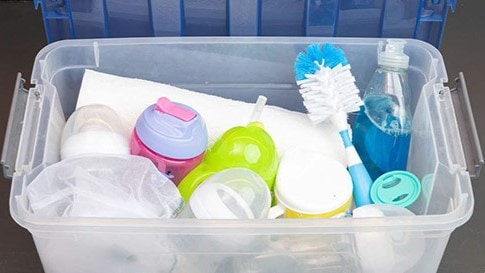
Clean all items after every use
Items to clean include:
- Baby bottles, nipples, sippy cups, and all parts.
- Cups, bowls, spoons, and forks.
- Tools and containers for preparing and storing baby food, infant formula, and breast milk.
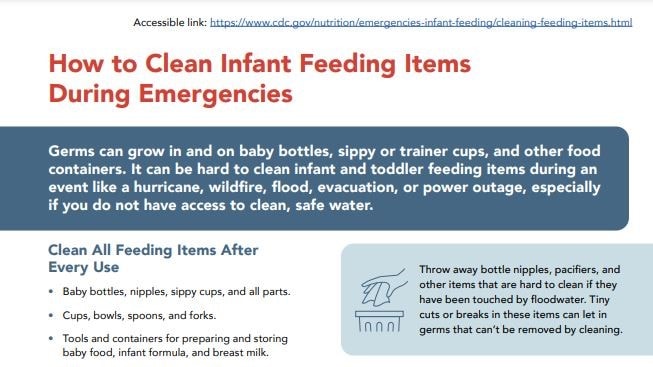
Always clean with safe water
- Use water that has not been used for anything else.
- In most emergencies, bottled water is safest for cleaning.
- If bottled water is not available, water contaminated with germs can be made safe by boiling, adding bleach, or filtering.
- Do not use water contaminated with harmful chemicals, toxins, or radioactive material. It cannot be made safe by boiling or adding bleach.
- Always follow instructions from local public health officials for specific advice about water safety.
- When safe water and soap are not available for cleaning feeding items, use disposable supplies for feeding your infant.
Make a cleaning kit
To safely clean and store everything you need to feed your baby, make a kit with:
- Wash basin* or storage bin with lid.
- Scrub brush.*
- Dish soap.
- Paper towels.
- Mesh bag for drying items.
*Don't use the wash basin or scrub brush to clean anything else. Use them only for your feeding items.
Follow these steps to protect your baby
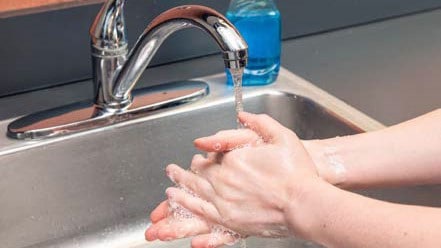
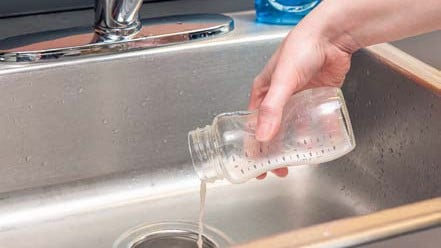
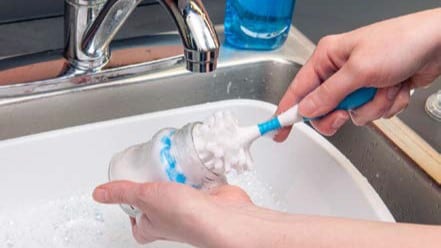
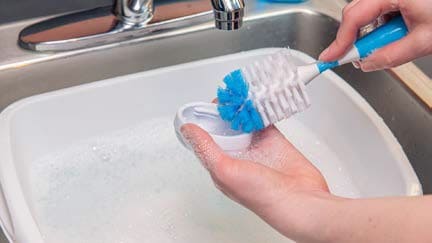
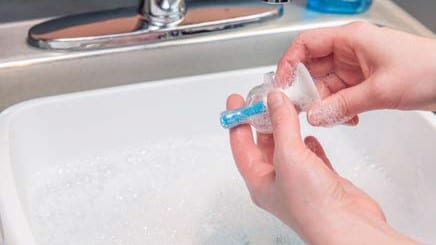
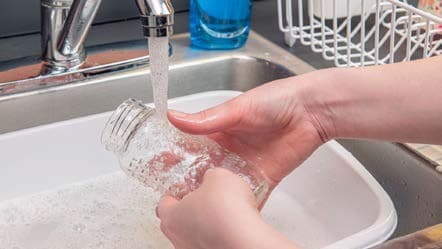
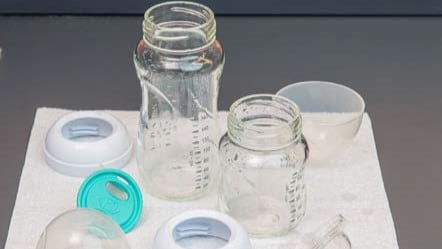
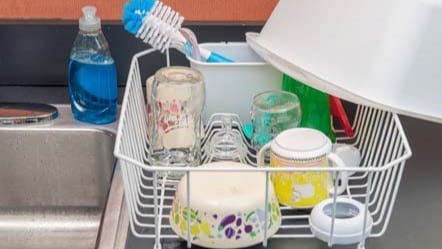
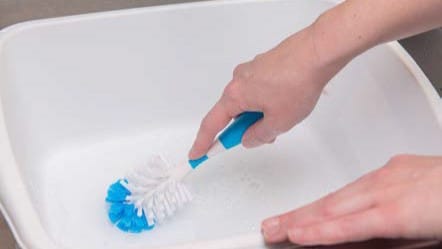
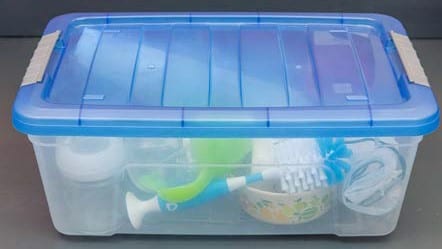
Do not clean infant feeding items near diapering areas!
Sanitize items as needed
If your baby is younger than 2 months or if your baby is sick, you will need to do one more step after washing and rinsing your feeding items. Sanitize all items at least once every day for extra protection.
Use one of these methods to sanitize your feeding items:
Method 1:
- Put items in a pot and fill with safe water.
- Boil for 5 minutes.
- Remove items carefully.
- Air dry sanitized items.
- Do NOT rinse sanitized items.
Method 2:
- Put items in a wash basin and fill with safe water.
- Add 1 teaspoon of bleach per 1/2 gallon or 8 cups of water.
- Soak for 2 minutes.
- Soak for 2 minutes.
- Remove items carefully.
- Air dry sanitized items.
- Do NOT rinse sanitized items.
Note: Any bleach that remains on feeding items after sanitizing will break down quickly as it dries and will not hurt your baby.
